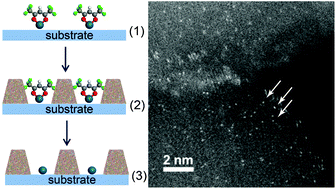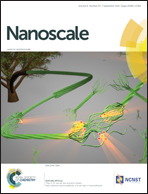Towards ALD thin film stabilized single-atom Pd1 catalysts†
Abstract
Supported precious metal single-atom catalysts have shown interesting activity and selectivity in recent studies. However, agglomeration of these highly mobile mononuclear surface species can eliminate their unique catalytic properties. Here we study a strategy for synthesizing thin film stabilized single-atom Pd1 catalysts using atomic layer deposition (ALD). The thermal stability of the Pd1 catalysts is significantly enhanced by creating a nanocavity thin film structure. In situ infrared spectroscopy and Pd K-edge X-ray absorption spectroscopy (XAS) revealed that the Pd1 was anchored on the surface through chlorine sites. The thin film stabilized Pd1 catalysts were thermally stable under both oxidation and reduction conditions. The catalytic performance in the methanol decomposition reaction is found to depend on the thickness of protecting layers. While Pd1 catalysts showed promising activity at low temperature in a methanol decomposition reaction, 14 cycle TiO2 protected Pd1 was less active at high temperature. Pd L3 edge XAS indicated that the low reactivity compared with Pd nanoparticles is due to the strong adsorption of carbon monoxide even at 250 °C. These results clearly show that the ALD nanocavities provide a basis for future design of single-atom catalysts that are highly efficient and stable.


 Please wait while we load your content...
Please wait while we load your content...